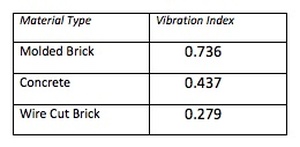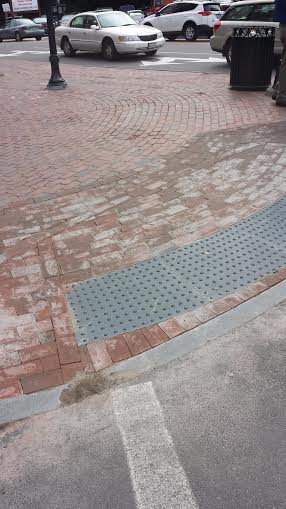 An advocacy piece appeared in Globe Magazine on November 29, 2015. It discussed difficulty in navigating the brick sidewalks of Beacon Hill from the point of view of one disabled person, Tommye Mayer It seemed to promote ripping out or substantially modifying brick sidewalks in historic areas to assure that persons like Tommye Mayer or Boston’s aging population can have a smoother walk in downtown Boston. What is so troubling about the article is that it gave no consideration to the unique contribution Boston’s brick sidewalks make to the city -- they are a precious legacy left us from generations centuries past that add so much to the beauty and charm of Boston. Bostonians who like brick sidewalks and enjoy their beauty were given no deference. Cambridge Brickwalk Conservancy (CBC) recently conducted a focus group with wheelchair bound folks, both male and female, from 38 years old to 78 years old, we learned that they all felt that the sidewalks of Cambridge could be improved. Their concern was not the material used for the streets per se. What was important to all of them was a smooth ride which allowed for safety, less vibration and jostling, flat areas wherever possible so that they could feel dignified. Their goal is independence. A balanced approach to the City’s sidewalks would permit all pedestrians safe travelling. Vibration was the subject of 2003 research at the University of Pittsburgh led by Annmarie R. Kelleher, OTR/L, Rory A. Cooper, PhD, Erik Wolf, MS, Shirley G. Fitzgerald, PhD, and Jonathan Pearlman, MS. Funding was provided by the VA Rehabilitation and Development Service, Veterans Health Administration, U.S. Department of Veterans Affairs, and the U.S. Department of Education, National Institute on Disability and Rehabilitation (NIDRR) Rehabilitation Engineering Research Center on Wheeled Mobility. The results of testing in 2002 and fifteen months later in 2003, demonstrated that certain brick sidewalks had less vibration than several other types of pavers as well as concrete. Bricks with squared edges demonstrated the least amount of vibration at both the seat and footrest among all the surfaces, including concrete. The front casters of wheelchairs “catch” the breaks or cracks between the concrete sections causing increased vibration levels. The front casters are usually small in diameter and loaded with less effective mass, they detect more subtle changes in the surface profile than at the seat. The table below uses data from the 2002 and 2003 study at the University of Pittsburgh which gives the vibration comparison of brick pavers with concrete. Given this engineering data, it turns out we can serve the disabled, like Ms. Mayer and the elderly and preserve the City’s legacy by using properly installed and maintained wire cut replacement brick whenever construction leads to molded brick removal. Wire cut brick results in less vibration than concrete. In fact, this was done on Dartmouth Street after the MBTA installed a elevator for the disabled from the subway stop below to the street above through the brick sidewalk in that location. In researching other cities with historic brick sidewalks, we found that Portland, ME, has taken a diametrically opposite approach to the brick sidewalks from that now being taken by Boston. Portland has recently decreed that brick sidewalks will be preserved or installed in its designated historic districts. This policy shift has resulted in the removal of ugly concrete ramps previously installed in these districts. In their place are newly constructed wire-cut brick ramps of the very type we have been encouraging Cambridge and Boston to consider. The photo below shows a recently installed wire cut brick ramp in Portland. Citizen groups are also involved in preserving the brick legacy. For example, the Kindling fund in Portland, ME, has sent aside $5000 to stamp stories into bricks used to fill gaps in the brick sidewalks. The stories imprinted are those city residents deem significant, such as historical facts, individual memories, and future wishes for the city.
Preserving brick sidewalks preserves as well our link to the past – and adds immeasurably to the unique character our city. And, we now know that this can be done without compromising the ease and comfort of the disabled through the use of wire-cut bricks for ramps.
0 Comments
Leave a Reply. |
AuthorDiane W. Beck
VP and Board Member Archives
December 2019
Categories |

 RSS Feed
RSS Feed